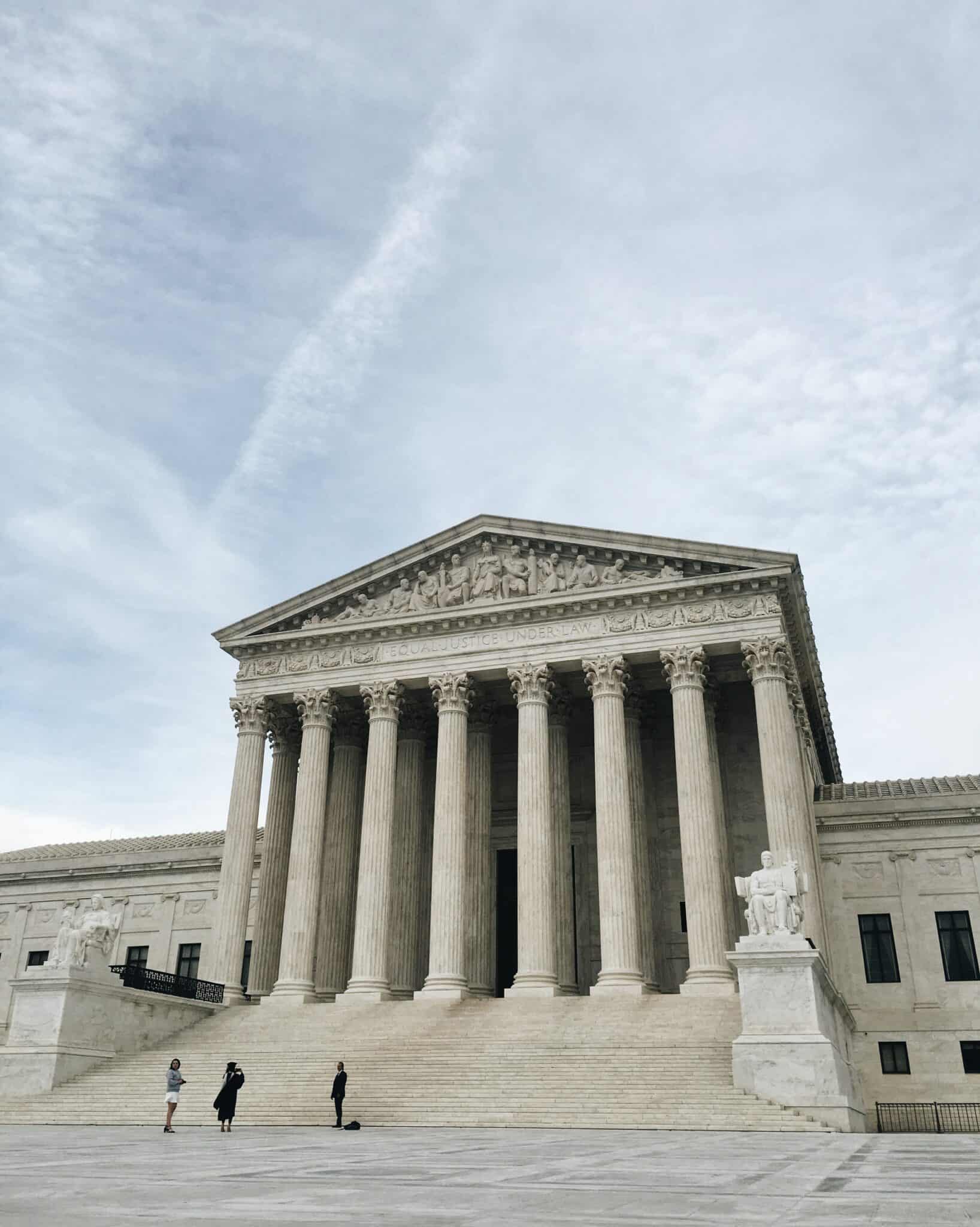
Dallas Estes is a student at Harvard Law School and a member of the Labor and Employment Lab.
If an employee is transferred out of the division she’s worked in for 10 years because of her sex, does that violate Title VII? Today, that depends on what Circuit you ask.
Title VII § 703(a)(1) makes it unlawful “to fail or refuse to hire or to discharge any individual, or otherwise to discriminate against any individual with respect to his compensation, terms, conditions, or privileges of employment, because of such individual’s race, color, religion, sex, or national origin” (emphasis added). Circuits have split over the meaning of this phrase. In the Eighth Circuit, a transfer does not amount to discrimination in the “terms, conditions, or privileges of employment” unless it causes a “tangible change in working conditions that produces a material employment disadvantage,” affecting objective criteria such as pay, benefits, or career prospects. Most circuits apply a similar standard. In contrast, the D.C. Circuit finds that a refusal to transfer because of a protected characteristic, without more, is discrimination. In short: in some circuits, an employee who is transferred because of sex cannot prove a claim under Title VII unless that transfer causes a “significant disadvantage”; in others, such a transfer is actionable standing alone.
The Supreme Court is poised to weigh in on this debate in Muldrow v. City of St. Louis. The question before the Court is: “Does Title VII prohibit discrimination in transfer decisions absent a separate court determination that the transfer decision caused a significant disadvantage?” Two ways to cast this question in Title VII’s terms are: when does an employer’s decision to transfer an employee because of a protected characteristic (1) rise to the level of discrimination or (2) alter the terms, conditions, or privileges of employment?
Background
From 2008 to 2017, Sargent Jatonya Clayborn Muldrow worked in the St. Louis Police Department’s Intelligence Division, where she investigated human-trafficking and public-corruption cases; worked Monday to Friday; and was an FBI-designated Task Force Officer with “the same privileges as an FBI agent.” In 2017, Muldrow and 21 other employees were transferred out of the Intelligence Division after a new Commander of Intelligence was appointed. In her new position, Sargent Muldrow had to work weekends; her work became “more administrative and less prestigious”; and she lost her FBI-designated status. Believing she had been transferred because of her sex, Sargent Muldrow brought suit against the City of St. Louis under Title VII.
The district court granted summary judgment in favor of the City, finding that Sargent Muldrow had failed to prove that her transfer was an “adverse employment action.” The Eighth Circuit affirmed, stating that “an employee’s reassignment, absent proof of harm resulting from that reassignment, is insufficient to constitute an adverse employment action.” Sargent Muldrow’s “mere preference for one position over the other” was “insufficient” because it “did not result in a diminution to her title, salary, or benefits” or “a significant change in working conditions or responsibilities.”
Positions of the Parties
On review, Petitioners – and the United States, which filed briefs supporting Petitioners and will participate in oral argument – don’t contend that Sargent Muldrow should have won under Eighth Circuit precedent. Instead, they challenge that circuit’s “adverse employment action” standard, arguing that it imposes a heightened harm requirement inconsistent with Title VII’s text, precedent, and purpose “to prohibit all forms of discrimination in employment decisions.” In reply, Respondents maintain that a harm requirement is grounded in Title VII’s bar on discriminatory conduct, because “discriminate” means to treat someone “worse than others.” The United States counters that “worse treatment is not equivalent to treatment resulting in a significant disadvantage,” and that “an employee is necessarily harmed if she is forced to transfer to a new position when a similarly situated male employee would have been permitted to remain in his preferred position.”
Under Respondents’ view, differential treatment does not rise to the level of discrimination unless it “causes harm” that is “objectively material.” They rely on Burlington Northern, in which the Supreme Court applied a “material adversity” standard in the Title VII anti-retaliation context. Petitioners rebut by distinguishing Burlington Northern, explaining that the “material adversity” standard in the anti-retaliation context references the point at which the exercise of protected rights – that is, reporting discrimination – would be chilled. Title VII’s anti-discrimination provision, in contrast, prohibits discrimination as such, and requires no threshold finding to effectuate its purpose.
Implications
The Supreme Court granted certiorari in Muldrow only with respect to transfer decisions – rather than the broader question as to “all ‘terms, conditions, or privileges of employment’” – but it’s unclear how much that will cabin Muldrow’s effects. Unless the Court holds that a transfer decision is a discharge or a refusal to hire, transfers must be grounded in Title VII’s “terms, conditions, or privileges of employment.” Absent some basis for differentiating transfers from other terms and conditions, it seems likely that lower courts will apply Muldrow outside the transfer context. It’s therefore worth considering the parties’ proposed standards and their potential ramifications.
Petitioners’ Standard: Title VII “prohibits all discriminatory job transfer decisions, not just those that a court concludes constitute a demotion or otherwise result in a significant disadvantage.”
According to Respondents, this standard would “swamp courts and employers with litigation over employment minutiae.” An objective harm requirement prevents employees from converting mundane and trivial employment actions into discrimination lawsuits on the basis of mere preference. Without a harm threshold, courts will find themselves at the center of everyday employment decisions of not only private employers, but also state and local governments and police departments – impairing the latter’s ability to transfer staff in response to local safety needs without fear of costly and time-consuming Title VII suits.
Some have also suggested that a broader standard could bolster attacks on DEI initiatives in the wake of Students for Fair Admissions by allowing Title VII to provide a basis for reverse-discrimination suits even in the absence of harm.
Respondents’ Standard: “The harm required under Title VII is not satisfied by simply citing subjective personal preferences and subjective feelings. The employee’s change of conditions must be such that ‘a reasonable employee’ in Petitioner’s position would have suffered some material harm.”
The United States argues that, under this standard, “even brazen acts of workplace discrimination—such as openly transferring an employee from one position to another based on her sex or race—cannot give rise to an actionable discrimination claim unless there is a showing of a materially significant disadvantage.” They cite EEOC v. AutoZone, where an allegedly race-based transfer was found not to be “adverse” because it did not “involve a demotion in form or substance.” And Petitioners point to troubling cases outside the transfer context – including Harris v. Attorney General, where a Black employee alleged he’d been made to work outdoors in dangerously high temperatures, while white employees were permitted to work inside – as examples of race-differentiated treatment that did not satisfy a heightened harm requirement.
It’s unclear which of these standards the Court might adopt, or how it might draw a line between the two. Oral arguments, scheduled for Dec. 6, are likely to provide a glimpse into where the Court stands.










Daily News & Commentary
Start your day with our roundup of the latest labor developments. See all
December 15
Advocating a private right of action for the NLRA, 11th Circuit criticizes McDonnell Douglas, Congress considers amending WARN Act.
December 12
OH vetoes bill weakening child labor protections; UT repeals public-sector bargaining ban; SCOTUS takes up case on post-arbitration award jurisdiction
December 11
House forces a vote on the “Protect America’s Workforce Act;” arguments on Trump’s executive order nullifying collective bargaining rights; and Penn State file a petition to form a union.
December 8
Private payrolls fall; NYC Council overrides mayoral veto on pay data; workers sue Starbucks.
December 7
Philadelphia transit workers indicate that a strike is imminent; a federal judge temporarily blocks State Department layoffs; and Virginia lawmakers consider legislation to repeal the state’s “right to work” law.
December 5
Netflix set to acquire Warner Bros., Gen Z men are the most pro-union generation in history, and lawmakers introduce the “No Robot Bosses Act.”